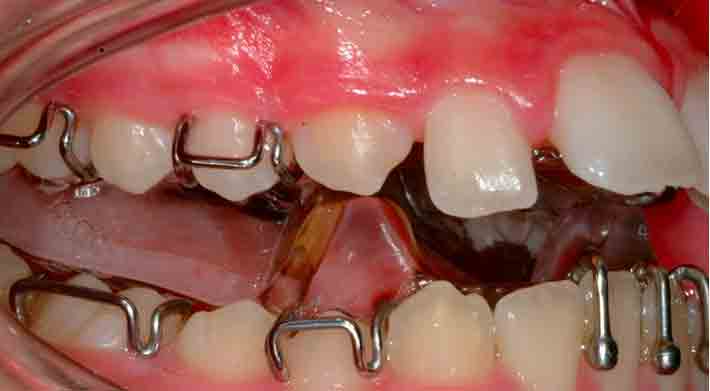What did they do?
They conducted a randomised controlled trial involving two groups and 88 participants.
Participants:
Children are aged 8–14 years with an overjet of 6 mm or more and incompetent lips. They were treated with the Twin Block appliance
Interventions:
They randomly allocated the participants into one of two groups with 6-weekly (Group 1) or 4-weekly (Group 2) recall intervals. They concealed the allocation well. Finally, they evaluated the data on an intention-to-treat basis. Blinding was only possible for the study model measurements.
The operators provided Twin Block therapy over 12 months using a fairly standard design. Importantly, they recommended 12 hours of daily wear. I could not find information on whether they wanted the participants to wear their appliances during specific periods (night or day). They used a Theramon timer in the acrylic base in the appliance’s lower component to measure the appliance’s wear time.
Outcomes:
The team recorded the wear-time, overjet, overbite, and molar relationships every 12th week and after 1 year (T1). Notably, they defined success as a final overjet of 4mm or less with Class I molar relationships. T
What did they find?
The authors reported a range of findings. Many of these were unrelated to the research question. Nevertheless, I thought most of the results were interesting. In terms of the main research question, they did not find any benefit from the 4-weekly recall. Interestingly, the duration of wear was 6.9 hours/day and 6.1 hours/day in the 6-weekly and 4-weekly recall groups, respectively. These differences were not statistically significant. The mean overjet at T1 was 3mm with 6-weekly recall and 3.8mm with 4-weekly recall.
Other interesting findings included the following:
- The mean wear-time for successfully treated patients was 6.8 hours daily compared to 5.2 hours daily in those that were not successful
- The success rate of therapy was estimated at 59%.
- The overjet was reduced to 4mm in 54 of 73 patients completing treatment, while complete molar correction was observed in 45 of 73 patients.
- Success did not seem to be influenced by either gender, age, or initial overjet.
- After the initial period of adaptation, wear time seemed to reduce over the 12 months (although wear levels were pretty constant between 6 and 9 months in the 6-weekly recall group)
What did I think?
I really liked this study. We are often quite reticent to evaluate our failures. However, failure to successfully treat large overjets in early adolescence is problematic. Particularly as we know that this type of malocclusion can be an important and frequent source of teasing and bullying in young children. The main explanation for failure with the Twin Block is poor compliance. It is, therefore, heartening to see a study considering means to overcome this problem.
From a methodological perspective, the study was excellent. The authors have undertaken numerous similar projects and ensured that the risk of bias was minimal. They also clearly reported the findings and were candid about some of the study’s limitations.
I felt that the difference between the interventions (4- vs 6-week review) was perhaps a little too conservative. I wonder whether other tailored protocols, for example, involving very regular review at the outset, could have been considered. Equally, a control group with less frequent recall (perhaps primarily 3-monthly) may have helped to isolate between-group differences. Similarly, it would be nice to consider allied projects involving in-person and remote reviews to more traditional approaches.
Finally, it was again revealing to see just how little patients seem to wear their appliances. Furthermore, these findings mirror our research evaluating the effectiveness of part-time and full-time wear protocols. Crucially, however, this study again highlights that part-time wear of removable appliances (of as little as 6 hours daily) seems sufficient to address significant inter-arch issues.
What can we conclude?
There was no meaningful difference in compliance with 4- vs 6- weekly review of a Twin Block. The authors are to be commended for making an excellent start on this topic; however, this does not mean my patients will see less of me. I continue to feel that ‘less is not necessarily more and await further and more nuanced research on this topic.

